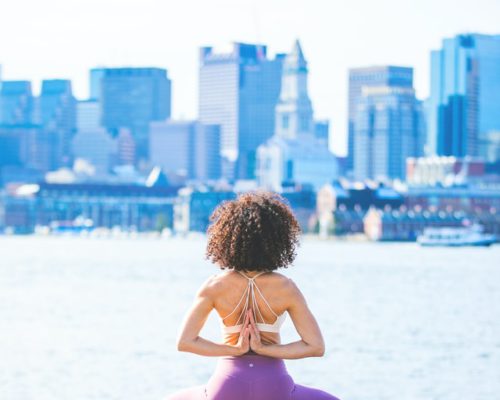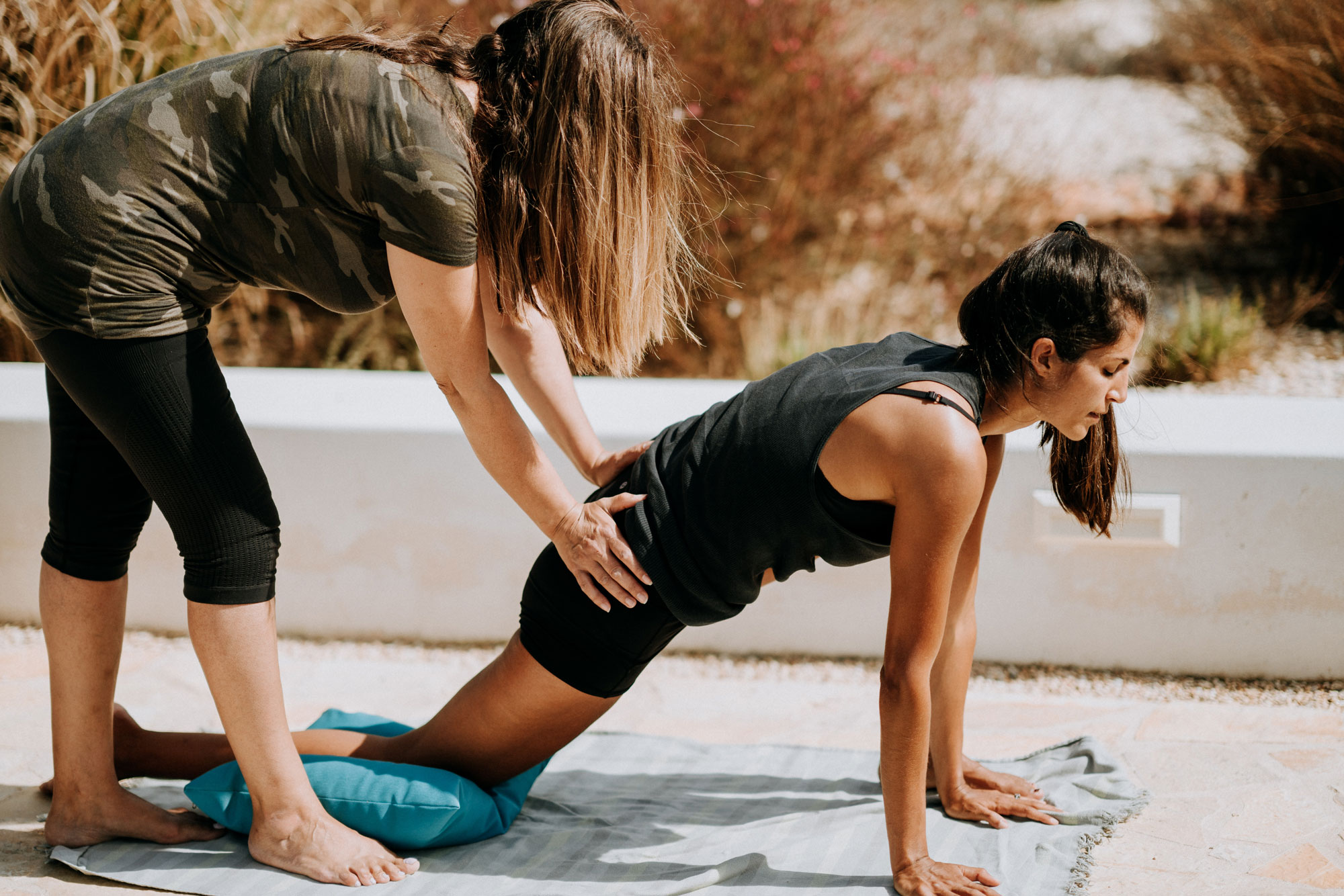Repetitive, overhead motions can wear down the rotator cuff muscles and are a common cause of injury. People who are prone to rotator cuff injuries include athletes who play baseball or tennis and people with jobs, such as house painting or construction, that require the body to bear weight or exert force overhead. Of course, an acute injury such as a fall can also cause damage. Regardless of how it happens, the risk of a rotator cuff tear increases as we age, and the wear on our bodies accumulates.
What is the rotator cuff?
The shoulder is a ball-and-socket joint that connects the upper arm bone to the shoulder blade. The rotator cuff is the term used for the group of muscles and their tendons – the supraspinatus, infraspinatus, subscapularis, and the teres minor. The rotator cuff muscles assist in providing strength and stability to the shoulder during its movement. The shoulder joint has a full 3 degrees of freedom and can execute a variety of upper extremity movements, including flexion, abduction, internal and external rotation.
Impingement is a common injury and occurs when a rotator cuff muscle swells and cramps the space between the arm and shoulder bones, causing pinching. Often times you’ll experience pain localized to the lateral or anterior aspect of your shoulder when you try and move the arm. A less common injury, a rotator cuff tear occurs when a rotator cuff tendon or muscle is torn. Sustained periods of impingement may result in a tear. Sometimes surgery is required to heal rotator cuff tears. Tears are very painful, but most of the time, they will heal with the proper stretching and strengthening exercises. Rotator cuff issues do not have to be inevitable as we age. With proper preventive measures, our rotator cuffs can stay mobile and pain-free.
Yoga: friend or foe to your rotator cuff muscles?
For most poses, it’s commonly taught that students should draw the shoulder blades down the back, away from the ears. That piece of instruction should not be used indiscriminately. Extensive handstand training and even downward dog can cause damage to the rotator cuff with that instruction. The action of bringing the shoulders down the back recruits the rhomboids in a downward action away from the ears. With the hands above the head, the trapezius and deltoids are engaged in an upward action towards the ears. These opposing forces are the root of the problem. So the proper instruction is whenever the shoulders are bearing weight with the arms extended beyond the head, you should think of bringing the shoulder blades up the back and towards the ears. When the muscles around the shoulders are properly recruited, many of yoga poses can be used to build strength in the rotator cuff.
Rotator Cuff Strengthening Exercises
Downward Dog Should Press
- Start on hands and knees in tabletop with your palms shoulder distance part and knees hip distance apart.
- Press your hips back and up, lifting your pelvic bone to the sky to find your downward dog.
- Bring your shoulders to your ears by exerting more pressure into the palms through straight arms.
- Bring your shoulders back to neutral.
- Move between the 2 shoulder positions 10 times.
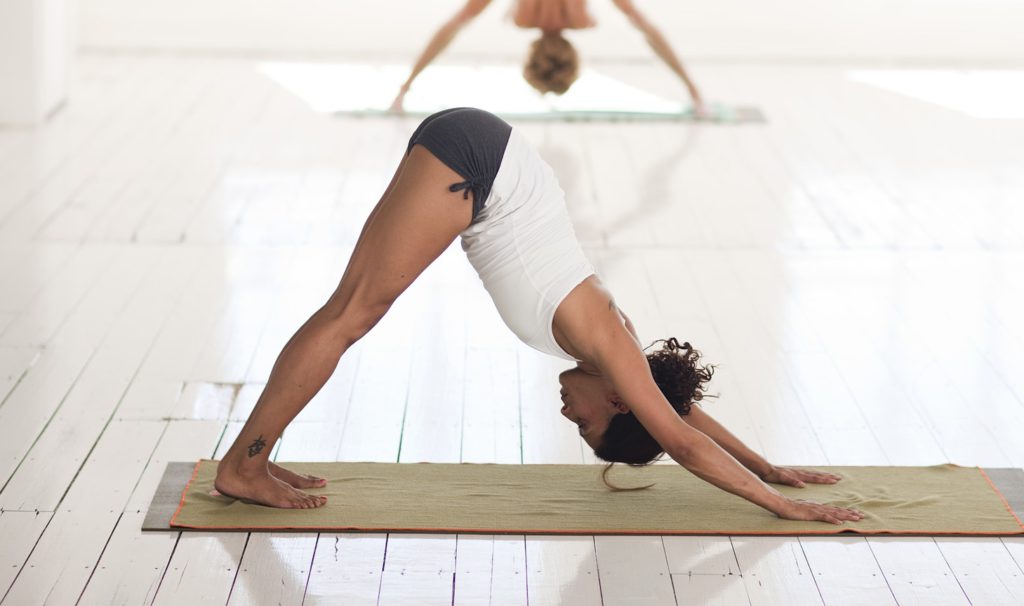
Plank Scapula Dips
- Place your hands on the mat shoulder-distance apart.
- Walk your feet back behind you until you create a long, straight line in your body from head to toes.
- Maintain straight arms and sink your chest towards the mat, finding a closing action in the shoulder blades.
- Now, maintain straight arms and press into the mat to bring upper middle back towards the sky – a broadening action in the shoulder blades.
- Move between chest to mat and upper middle back to sky 10 times.
Rotator Cuff Stretching Exercises
Thread the Needle
- Start on hands and knees in tabletop with your palms shoulder distance part and knees hip distance apart.
- Slide your right arm underneath your left arm with your palm facing up. Drop your right shoulder come all the way down to the mat and rest your right ear and cheek on the mat.
- Keep your left elbow lifting and your hips raised. Do not press your weight onto your head and let it be in a position of without any strain.
- After holding for 30-60 seconds, switch to the left side.
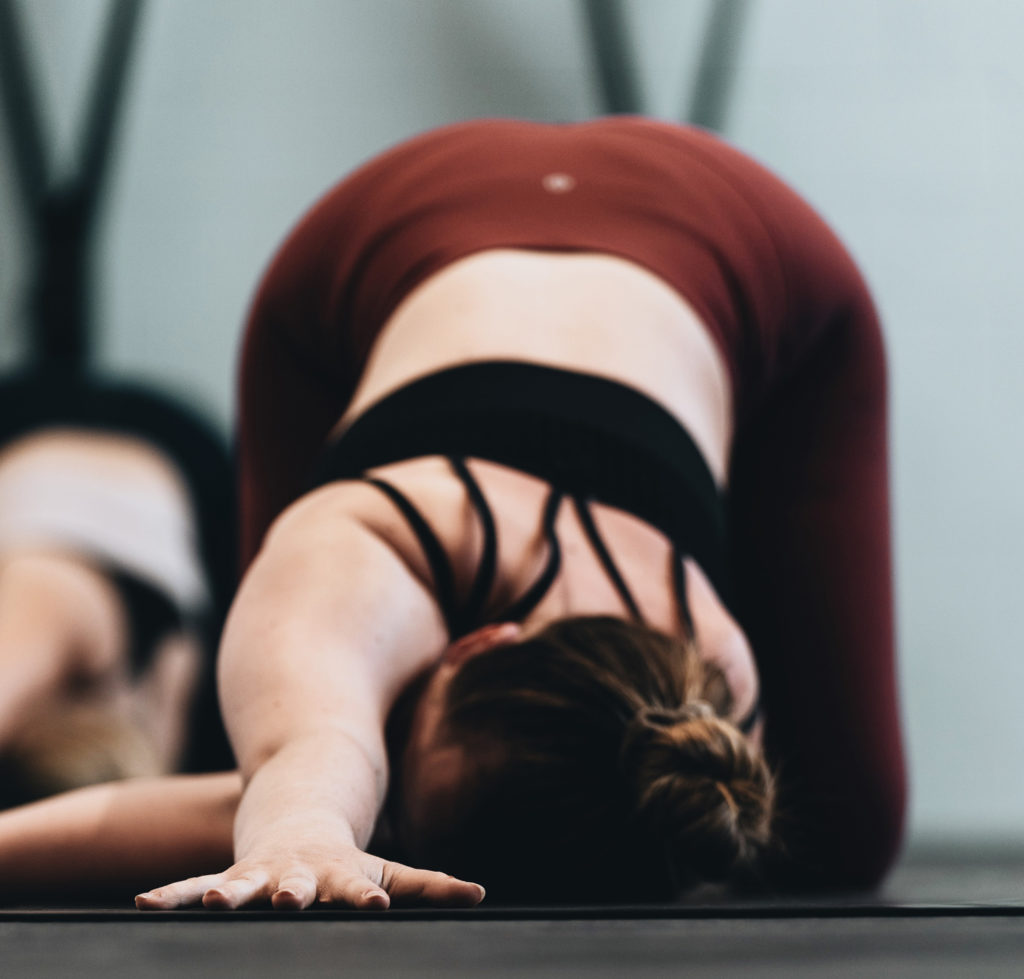
Heart-Melting Pose
- Start on hands and knees in tabletop with your palms shoulder distance part and knees hip distance apart.
- Sit the sitting bones back into child’s pose.
- Lift your head slightly and bring your shoulders towards your ears.
- Place your chin or forehead on the floor.
- Press the upper chest into the mat.
- Hold for 30-60 seconds.
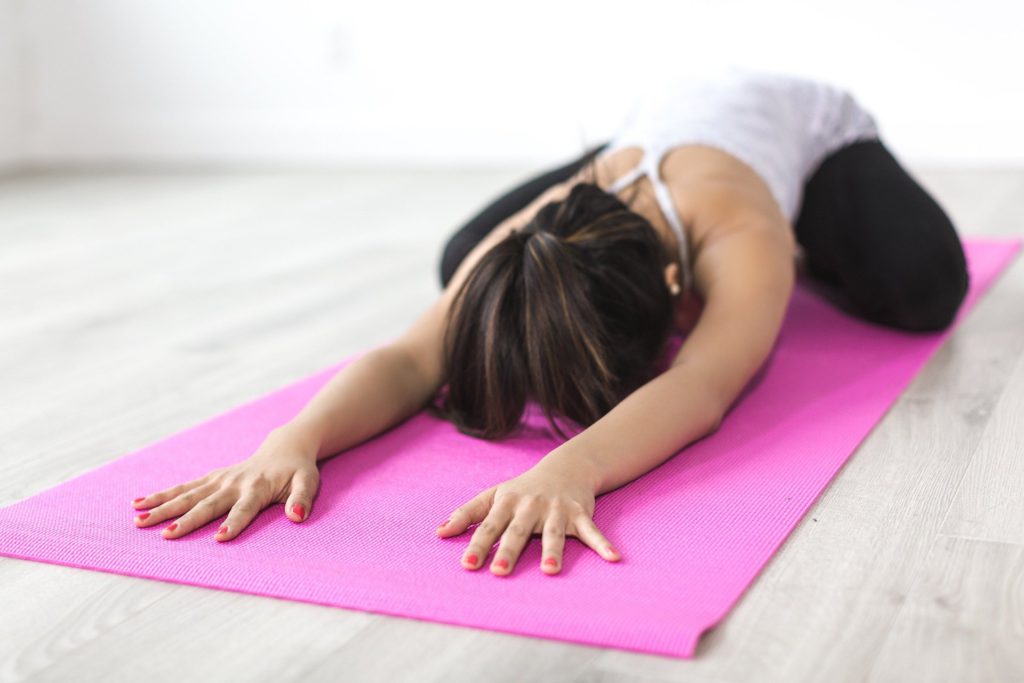
These are just a few of the exercises that are greatly beneficial for maintaining the health and mobility of your rotator cuffs with the proper muscle recruitment. By building body awareness through a regular yoga practice, you’ll learn how to focus almost any pose to promote strength in the rotator cuffs.
For more on healthy rotator cuffs, check out our schedule where you’ll find classes targeting specific body areas or try a personalized session with one of our instructors.
